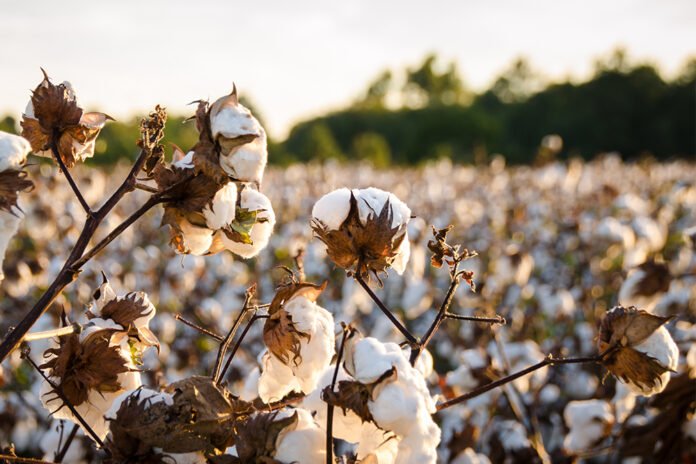In the fashion industry, the transition to regenerative fiber farming is only just getting under way, meaning regenerative fashion can be hard to find, and often, eye-wateringly expensive – an unfortunate reality of sustainable supply chains as they work to compete with fast-fashion business models. There are some designers who are spearheading regenerative garments in their collections.
Angel Chang from China is one such designer. Made by indigenous artisans in the mountainous province of Guizhou in China, every garment produced by Angel Chang is regenerative. Her collection is made with native seed cotton that has been grown without chemicals and dyed with locally harvested indigo and gardenia.
She says, the cotton is unprocessed and unbleached – so the oil of the seed is retained on the fiber and keeps the fabric soft”. “By strictly following the traditional processes [of the Miao and Dong ethnic minority grandmothers] we have created clothing with a nearly zero carbon footprint.
Courtney Holm is another designer who has worked extensively to produce truly low- or positive-impact clothing for her Melbourne-based label A.BCH. The brand’s linen shirt is made from 100% global organic textile standard certified linen, grown in France by a collective of organic-flax farmers. Flax generally grows with minimal irrigation and when farmed without chemical fertilizers and pesticides can be a carbon sink (that is, the flax plants can absorb more CO2 than they emit).
The first stage of processing the linen is done locally. Then the fibers are spun into yarn in Hungary and the yarns are sent to Belgium where they’re woven in a carbon neutral mill and whitened with low-impact oxygen whiteners. From there, the linen is sent to A.BCH’s Melbourne factory where it’s cut and sown into the A.05 linen shirt, a mainstay of the label’s collection since its launch in 2017.
We believe that impact starts at fiber,” the CEO of New York-based label Another Tomorrow, Vanessa Barboni Hallik, says. Take, for example, the tuxedo jacket, which forms part of her “daily uniform”.
The jacket is made with wool from a Responsible Wool Standard certified farm in Victoria, Australia. RWS certification requires farms to uphold the highest standards of animal welfare, so no mulesing is allowed. Farmers must use progressive land management techniques that protect soil health, biodiversity and native species.
We love merino for its temperature-regulating properties, its durability,” says Maggie Hewitt. The New Zealand designer is renowned for integrating the highest standards of sustainability and traceability into her merino knitwear label Maggie Marilyn. Her collection is made with ZQRX certified merino wool – that is, grown in New Zealand by producers whose farming techniques restore waterways, protect native species, offset carbon, and enhance local communities.
Kit Willow, the founder of Sydney based clothing label KitX, is a pioneer of sustainable fashion who describes hemp as a fiber of the future. Hemp is an extremely resilient crop that grows with minimal irrigation and without synthetic pesticides or fertilizers. Because of its deep taproot system it can pull toxins from the soil, while research suggests industrial hemp can be twice more effective than trees in sequestering carbon.
In the KitX collection, the “hemp tee” is made from a hemp-cotton blend fabric knitted in Melbourne and constructed in Sydney using Citizen Wolf’s zero-waste production technology.
Others include Mara Hoffman who is headquartered in New York, all their wool knitwear and accessories are made using “climate beneficial” wool from Emigh ranch in northern California. The creative director of Melbourne-based label Joslin, Elinor McInnes, is renowned for her love of linen. So much so, Joslin only works with suppliers and textile mills that have received European Flax certification.



